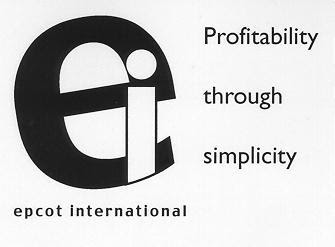Three companies are causing some perturbation in healthcare diagnostics field.
They are Theranos, 23andMe and Nanobiosym. I am sure there are others on the
horizon. They are simplifying how diagnostic information can be used by
individuals to stay healthy and prevent diseases before they become life
threatening. Each company is using advances in software and information
technology to create methods and devices that are useful to us. The testing
costs are significantly lower than the traditional tests. Better and quicker information
at lower costs suggest that there are possibilities.
Drug discovery is a cumbersome process and takes five to seven years to
identify the molecules that could be used to cure a disease. Recently a friend
Mr. Rohit Phansalkar (1) brought Verseon
Corporation (2) to my attention. Reviewing their information and
some of the filed IP, it seems that they could do the same what is happening in the
diagnostics area. The following is from company’s information package.
“More
than a decade of intense research and development has yielded two key
innovations: the Molecular Modeling Engine (MME) and the Molecule Creation
Engine (MCE). The MME overcomes the accuracy barrier that has plagued other
computational methods for virtual drug screening. The MCE enables the company
to explore a vast and as yet undiscovered chemical space of potential drug
candidates. When combined, these two technologies yield multiple,
chemically-diverse drug candidates per program, which we believe will
significantly increase the probability of success in the later stages of drug
development. “
“Company’s
Molecule Creation Engine comprises a large collection of novel algorithms and
an encoded chemical reaction knowledge base that when combined together are
capable of creating a practically unlimited supply of novel, drug-like and
synthesisable compound designs. Secondly, the company’s Molecule Modeling Engine
combines multiple breakthroughs in the computational modeling of small
molecule-protein interactions to successfully predict which compound designs
will be potent for a given disease target protein. Finally, by leveraging the
capabilities of both engines, Verseon has discovered and assimilated the core
competencies of how to accelerate lead drug optimization in a highly resource
efficient and cost efficient manner in order to rapidly advance multiple
promising lead candidates in multiple and unrelated disease indications.”
Reviewing their filed patents and other information I would conjecture
that if Verseon can create/develop new and/or significantly better and
effective molecules faster than the current methods that have less side effects,
their software would be of immense value for curing diseases. Patients will
benefit. Shortened drug discovery time would extend the patent’s commercial
life i.e. additional revenue for the company. Better designed molecule could
have wider use and would be an overall win through economies of scale leading
to better business practices and manufacturing technologies.
An argument can be made against my observations about Verseons’s
capabilities. It would be that National Institute of Health and pharma
companies have established models and methods to develop new drug molecules,
thus why we need other models. However, their recent results have not been astounding.
Had they been successful, we would have seen new drugs that are significantly
better than existing drugs rather than “me-too” or marginally better drugs. If
the pharma companies were successful, we would not be looking at almost drying
of the drug pipeline for the masses. Pharma most recent discoveries are
catering to less than 0.05% of the global population.
Why Verseon claims to be succeeding? They believe that in their modeling
they can quickly see the interaction of the molecules against set parameters to
design a better drug molecule. Company believes that the therapeutic profile of
the selected molecules has reduced drug interaction and they have higher
performance. They will have to prove their hypothesis through clinical trials of
the drugs under development.
Verseon is working on drugs for Diabetic Retinopathy, Diabetic Macular
Oedema and Age-related Macular Degeneration. Physicians inject current drugs
for these diseases. This is an overall an expensive proposition. Verseon is
looking at eye drop use. If that happens, it is expected the drugs could be
priced lower due to reduced physician intervention and could benefit much
larger global population than speculated.
Verseon could be the company that has a better idea about drugs and
their administration. They could be Pharma’s “creative destructionist”.
Before the drugs get to clinical trials Verseon or their licensee will
have to be mindful of how APIs of the discovered drugs are manufactured,
formulated and priced. Unless the drugs are accessible to masses, new drugs
will have limited use. Under current regulations, process improvements after
drug commercialization are out of the question. This is due to the need of
reconfirm drug efficacy and effectiveness.
I would not be surprised Verseon’s success could spill over to companies
like Apple, Google and Microsoft etc. who could use their creative algorithm
developing and modeling skills for better drug discoveries. Of the three
companies mentioned earlier 23andMe (3) has recently announced their
venture in drug discovery. Time will tell who all will change the playing filed,
as there are opportunities.
Girish Malhotra, PE
EPCOT International
- Phansalkar, Rohit: Chairman and CEO RKP
Capital, Inc. Las Vegas, US private communication June 3, 2015
- Verseon Corporation, http://www.verseon.com Accessed June 22,
2015
- In Big Shift, 23andMe Will Invent Drugs
Using Customer Data, http://www.forbes.com/sites/matthewherper/2015/03/12/23andme-enters-the-drug-business-just-as-apple-changes-it/
Accessed July 9, 2015
